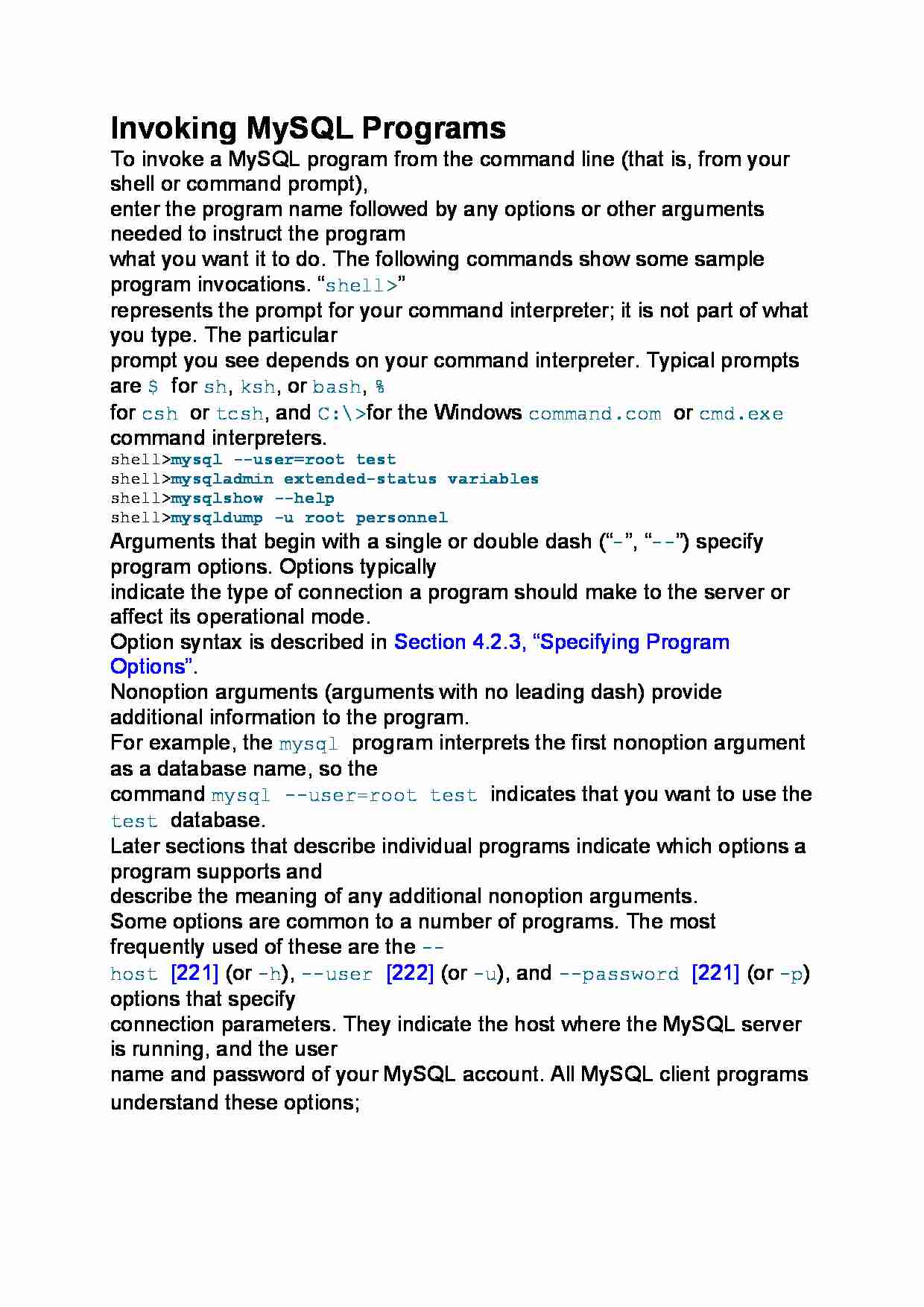
Invoking MySQL Programs
To invoke a MySQL program from the command line (that is, from your shell or command prompt),
enter the program name followed by any options or other arguments needed to instruct the program
what you want it to do. The following commands show some sample program invocations. “shell”
represents the prompt for your command interpreter; it is not part of what you type. The particular
prompt you see depends on your command interpreter. Typical prompts are $ for sh, ksh, or bash, %
for csh or tcsh, and C:\ for the Windows command.com or cmd.exe command interpreters.
shell mysql --user=root test
shell mysqladmin extended-status variables
shell mysqlshow --help
shell mysqldump -u root personnel
Arguments that begin with a single or double dash (“-”, “--”) specify program options. Options typically
indicate the type of connection a program should make to the server or affect its operational mode.
Option syntax is described in Section 4.2.3, “Specifying Program Options”.
Nonoption arguments (arguments with no leading dash) provide additional information to the program.
For example, the mysql program interprets the first nonoption argument as a database name, so the
command mysql --user=root test indicates that you want to use the test database.
Later sections that describe individual programs indicate which options a program supports and
describe the meaning of any additional nonoption arguments.
Some options are common to a number of programs. The most frequently used of these are the --
host [221] (or -h), --user [222] (or -u), and --password [221] (or -p) options that specify
connection parameters. They indicate the host where the MySQL server is running, and the user
name and password of your MySQL account. All MySQL client programs understand these options;
... zobacz całą notatkę



Komentarze użytkowników (0)